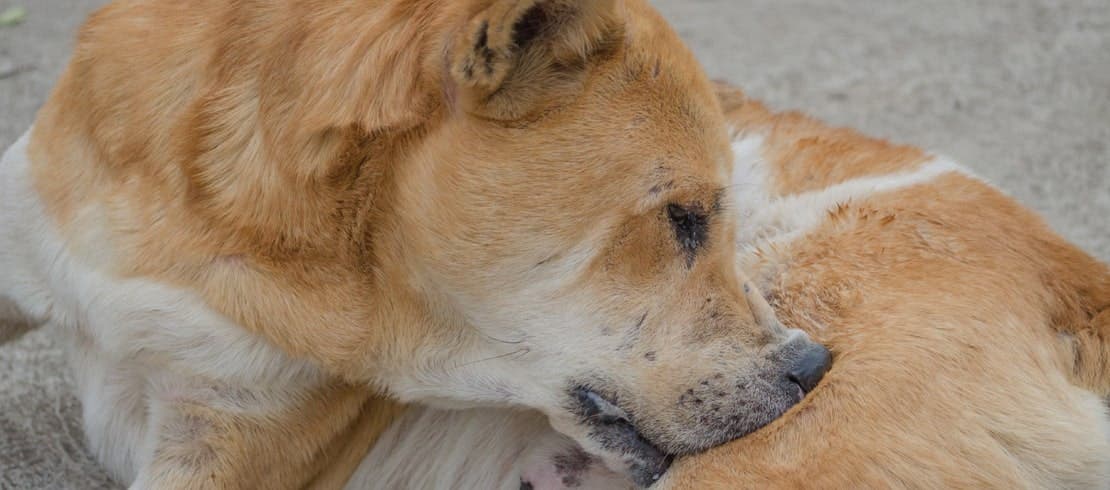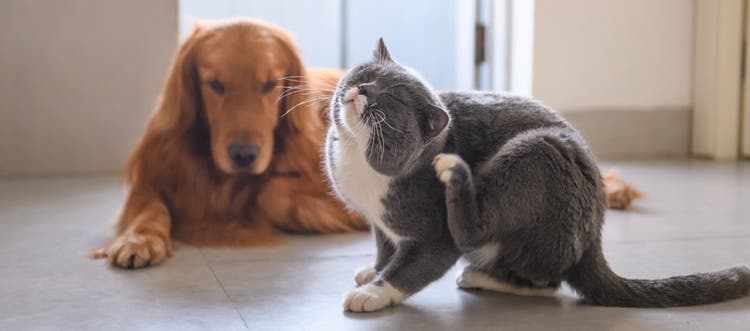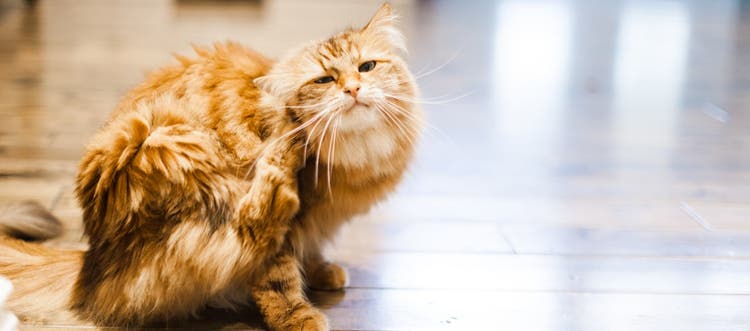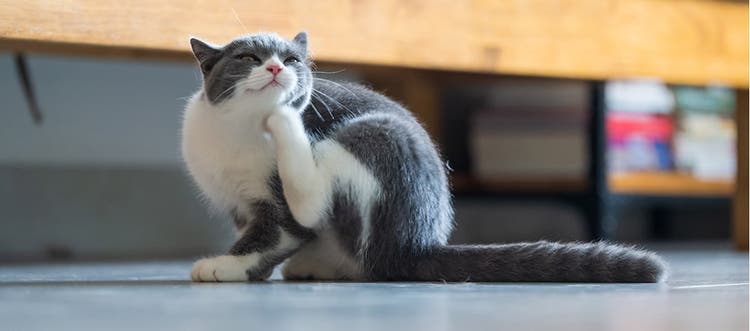How to spot fleas on your cat or dog.
A flea is a small, dark insect, about the size of a sesame seed. Fleas live off the blood of their hosts and have legs with gripping claws and an annoying, tenacious bite.
Under a microscope, a flea looks like this:
Because we have difficulty seeing fleas with the naked eye, you’ll need to look for the associated signs of a flea infestation in addition to the insects themselves. Their presence can cause cats and dogs serious discomfort.
It’s a good practice to regularly search your pet’s coat for signs of fleas and other problems. If your dog or cat is scratching more than usual, don’t hesitate to thoroughly check their fur. Learn more about what the signs and symptoms of fleas are in order to recognize and help stop potential infestations as soon as possible.
Common Signs of Fleas
Most fleas are difficult to see, which is why identifying other evidence of their presence is an important part of controlling infestations.
Fleeing Fleas
A flea’s mouth and legs are equipped with sharp parts that keep them fastened to pets’ skin and hair and make them difficult to dislodge, even with a flea comb. But when they decide to move, they move quickly. Their powerful legs enable them to jump as far as 50 and 200 times their body length — 7 inches high and 19 inches away.
Red Bites
Flea bites leave tiny, raised, red spots on your pet’s skin. However, by the time pet owners realize their pet has an infestation, the small red bumps will have likely progressed to red, irritated skin. Learn more about what flea bites look like with our visual guide.
Black Waste
Fleas leave behind feces, called “flea dirt,” on your pet that looks like fine dirt or black pepper. An easy way to test for flea dirt is to rub your dog’s or cat’s fur with a damp paper towel. If your pet has flea dirt in their fur, the paper towel will likely pick up brown, dirt-like specks that will turn red when exposed to the moisture on the paper towel.
Itching, Licking and Scratching
Fleas activate a response in an animal’s immune system, causing irritation, swelling and itching. So, if you see your cat or dog repeatedly or aggressively scratching, biting or licking, it’s a good sign that fleas are pestering your pet.
Skin and Coat Damage
You may also see inflamed skin and patches of hair loss as a result of your pet’s response to flea irritation. Excessive scratching and biting can cause damaged skin, loss of fur or infection and may indicate a flea infestation or another problem that requires your vet’s attention.
Associated Health Issues
A few fleas may not do much damage to your pet, but fleas multiply rapidly and can eventually take enough blood to cause anemia, especially in young puppies and kittens. If your cat or dog is acting listless, weak or tired, has pale gums or suddenly loses weight, they may have anemia and you should see a vet immediately.
Dogs and cats that respond by biting at sites of irritation may also swallow fleas. Some fleas may carry diseases that can affect cats or dogs, or even tapeworms that can further harm your pet. If you suspect your pet has fleas, it’s important to also watch for a tapeworm infection in your dog or cat.

How to Look for Fleas on Your Pet
You can inspect your pet’s body with your hands to start. As soon as you find fleas or proof of their presence, it’s important to act quickly to put a stop to the infestation.
You may have to look all over your pet’s body to spot these stealthy invaders. Start wherever you may have seen your dog or cat scratching, and then keep looking until you’ve inspected their entire body. Make sure to look on your pet’s back, belly, legs and head, as well as under the tail, between the legs and behind the ears.
If your hand inspection fails to turn up fleas, run a flea brush or fine-toothed comb through your pet’s fur. Inspect the comb for fleas and flea dirt.
How to Help Prevent or Treat Fleas on Your Pet
It’s easier to avoid a flea infestation before it starts than it is to treat one, so it’s important to help prevent fleas with preventive treatment.
And it’s even more important, of course, to respond immediately to proof of an infestation; treatment options include fast-acting oral products, specially formulated flea shampoos and flea sprays. To help thoroughly treat and clear out the infestation, be sure to treat all other pets, your home and your yard for fleas, too.








